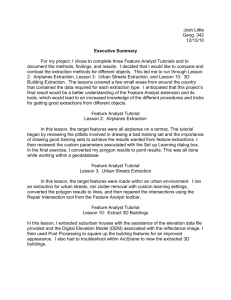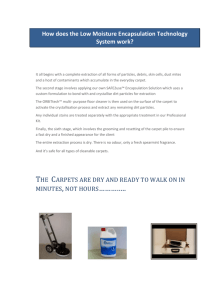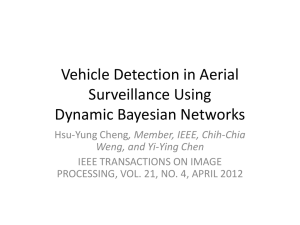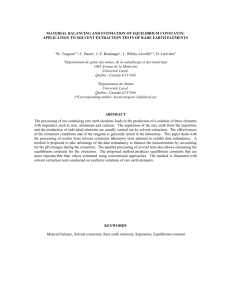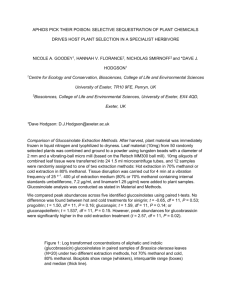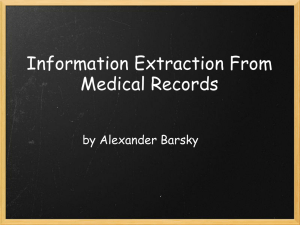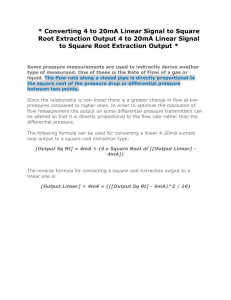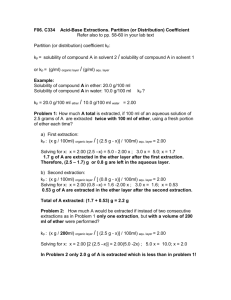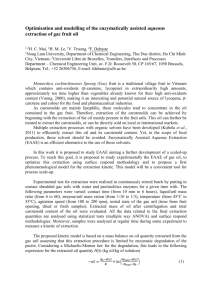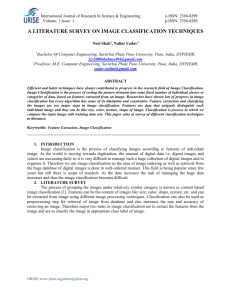Data Extraction Form: Systematic Review Analysis
advertisement
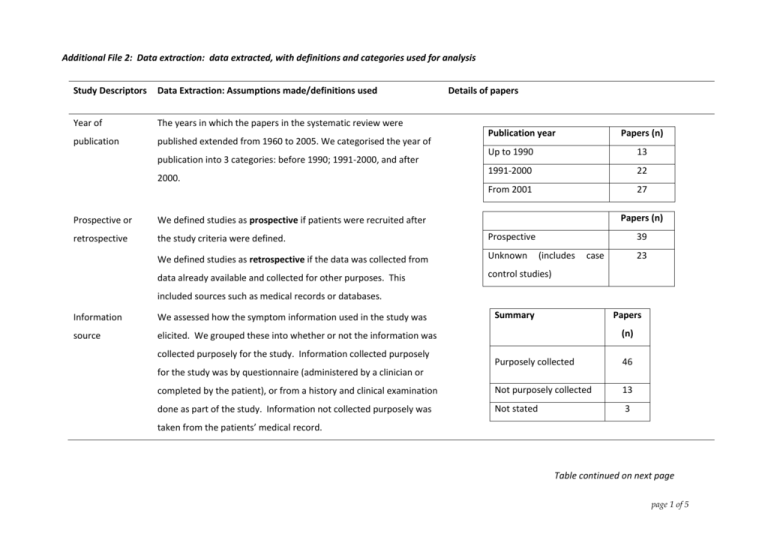
Additional File 2: Data extraction: data extracted, with definitions and categories used for analysis Study Descriptors Data Extraction: Assumptions made/definitions used Year of The years in which the papers in the systematic review were publication published extended from 1960 to 2005. We categorised the year of publication into 3 categories: before 1990; 1991-2000, and after 2000. Details of papers Publication year Papers (n) Up to 1990 13 1991-2000 22 From 2001 27 Papers (n) Prospective or We defined studies as prospective if patients were recruited after retrospective the study criteria were defined. Prospective We defined studies as retrospective if the data was collected from Unknown data already available and collected for other purposes. This control studies) 39 (includes case 23 included sources such as medical records or databases. Information We assessed how the symptom information used in the study was source elicited. We grouped these into whether or not the information was collected purposely for the study. Information collected purposely Summary Papers (n) Purposely collected 46 completed by the patient), or from a history and clinical examination Not purposely collected 13 done as part of the study. Information not collected purposely was Not stated 3 for the study was by questionnaire (administered by a clinician or taken from the patients’ medical record. Table continued on next page page 1 of 5 Appendix 2: Data extraction: data extracted, with definitions and categories used for analysis (continued) Study Descriptors Data Extraction: Assumptions made/definitions used Patient recruitment: In some studies it was not stated if the recruitment was consecutive or not? consecutive or not. Where this occurred, if it was obvious form the design, the appropriate recruitment was recorded. However, in some papers this was not possible to identify, and ’not stated’ was recorded. Assumption made: if data was Details of papers Summary Papers (n) Yes 39 Unknown(includes case control studies 23 taken retrospectively from a database of endoscopy patients, it was assumed that consecutive patients were recruited. Study type Some studies were cross sectional in design, but had an Study Design additional component of follow up. These studies were Cross sectional analytical 42 classified as cross-sectional. Case control 14 Cohort 5 Combined: cohort and case review 1 If there was doubt about a study type, the higher quality study type was chosen – this optimises results. Patient source: clinical The majority of patients were recruited or identified from setting of the study endoscopy units or radiology centres. Data was extracted Summary Papers (n) Papers (n) 19 Patients were also recruited from other clinical settings. The General practice (including screening, community) Specialist clinical setting was summarised into those from general Mixed (case control) 14 about the source of referral of these patients to these units. 29 practice and those from a specialist setting. page 2 of 5 Appendix 2: Data extraction: data extracted, with definitions and categories used for analysis (continued) Study Descriptors Data Extraction: Assumptions made/definitions used Population type: In some studies patients in the study all had symptoms, while in others asymptomatic patients were also included. In addition, some papers presented information from a population of all bleeders: in these papers information was also provided about symptoms other than bleeding. Symptoms present in study population We grouped the papers into those where all the participants had symptoms and those in which asymptomatic people were also included. Number of symptoms reported per patient Studies differed in how they reported the presence of symptoms. In some studies, patients could have more than one symptom/indication for colonoscopy recorded,(ie non-mutually exclusive) while in others only 1 symptom or indication was recorded (ie symptoms were mutually exclusive). The significance of this is that in non-mutually exclusive papers it is likely that all symptoms present were recorded, whereas in mutually exclusive papers it was possible (and indeed likely) that patients had additional symptoms that were not reported. In only 1 paper was the hierarchy for the reporting of symptoms recorded. Details of papers Symptom background Papers (n) Included symptomatic and asymptomatic people All FOBT +ve All people had bleeding All symptomatic (asymptomatic people symptoms not included) 40 Number of symptoms reported Papers (n) 1 7 15 Maximum of 1 per patient 19 Any number reported 43 Table continued on next page page 3 of 5 Appendix 2: Data extraction: data extracted, with definitions and categories used for analysis (continued) Study Descriptors Data Extraction: Assumptions made/definitions used Ease with which The quality of the data analysis and presentation varied in the papers; in some cases major assumptions about either the study or the figures given needed to be made. Data extraction was categorised as listed below, with the assumptions made to rectify problems identified: data relevant to the systematic review was available in paper Easy (all information in the paper); all information is in the paper, but with minor miscalculations (usually typographical errors) of numbers with rectification obvious; obvious corrections made all information in the paper, but with minor miscalculations where rectification was not obvious; calculation made using other data provided – for eg discrepancy between data provided in a table and in the text: assumption made: use data in table, unless obviously incorrect; use table providing the most information, or most consistent information. all information was in the paper, but data required needed to be recalculated (however, the results do not equal other values in paper – eg OR); major assumptions were needed to extract figures: for example if the denominator is known, use maximum number of people participating in a study) assumptions were needed about the methodology Details of papers Data accessibility Papers (n) Easy/minor issues 52 Major issues 10 Note: There were 2 papers with 2 problems and 1 paper with 3 problems. Table continued on next page page 4 of 5 Appendix 2: Data extraction: data extracted, with definitions and categories used for analysis (continued) VALIDITY CRITERIA Reference standard Studies used a range of reference standards: colonoscopy, sigmoidoscopy (flexible or rigid), barium enema, clinical follow up or a combination of these. One study did not have a single reference standard, but used multiple diagnostic modalities. Diagnostic test used Papers (n) Colonoscopy 28 All others 34 4 studies were case control studies: cases were diagnosed by colonoscopy, but the controls had no verification page 5 of 5


